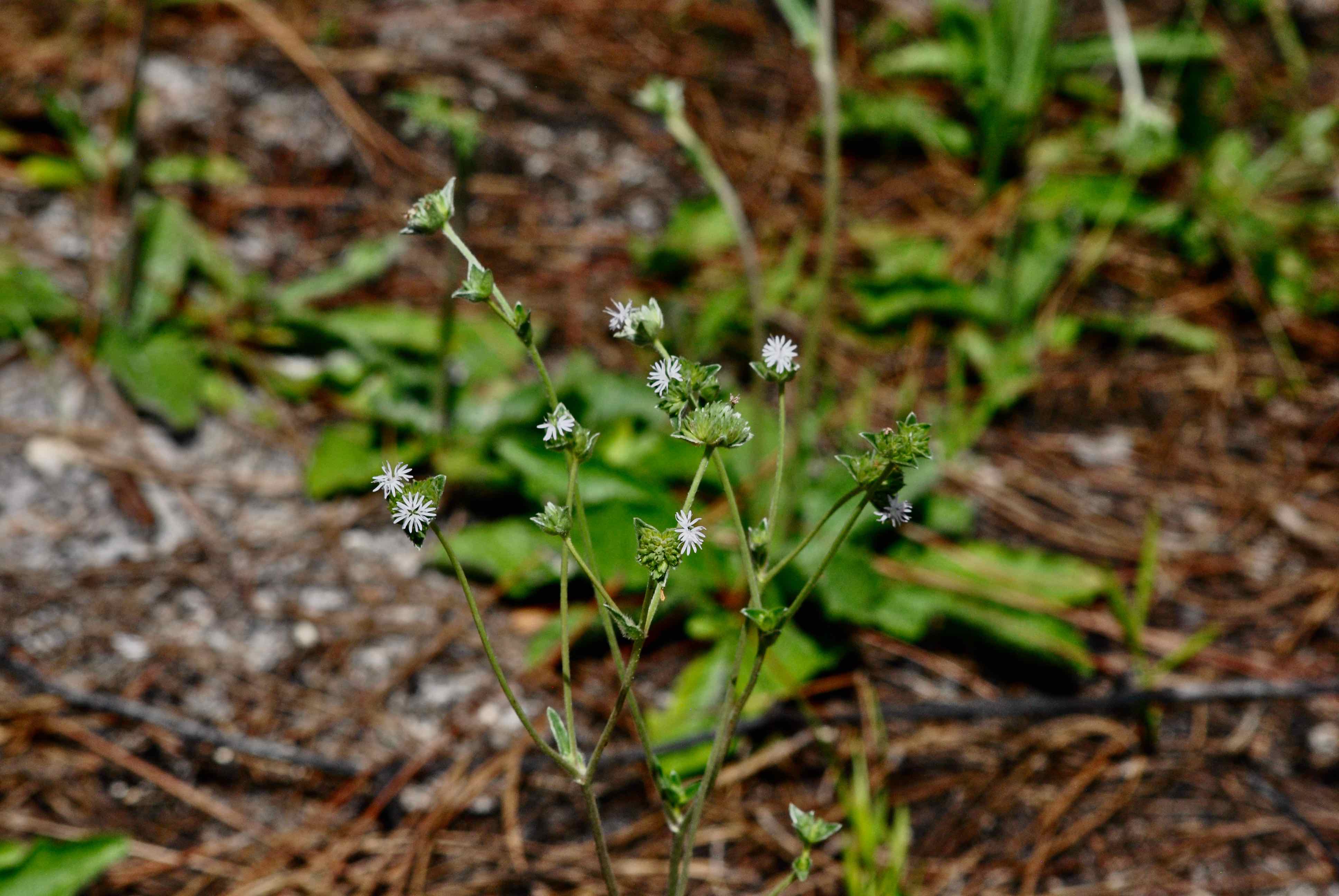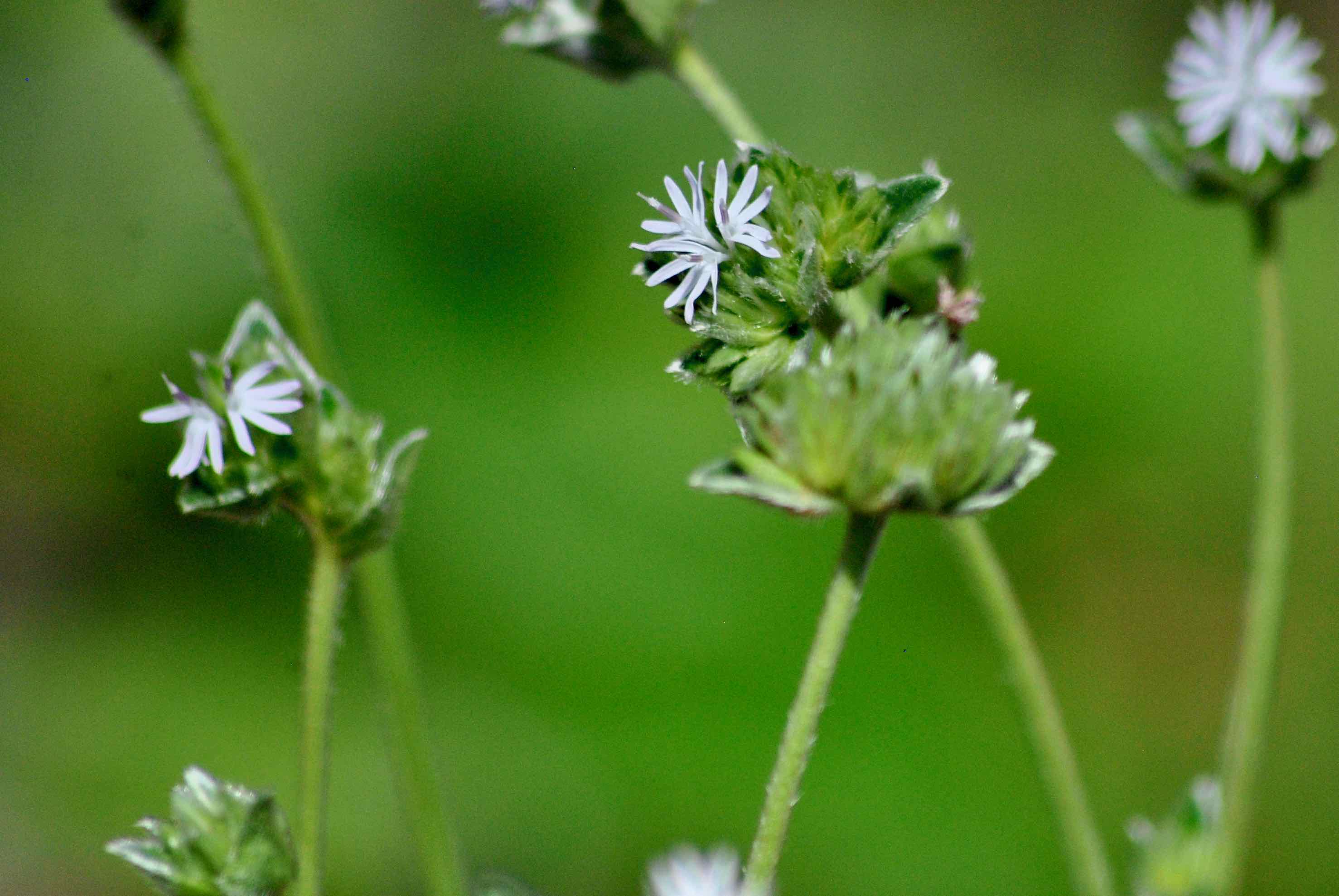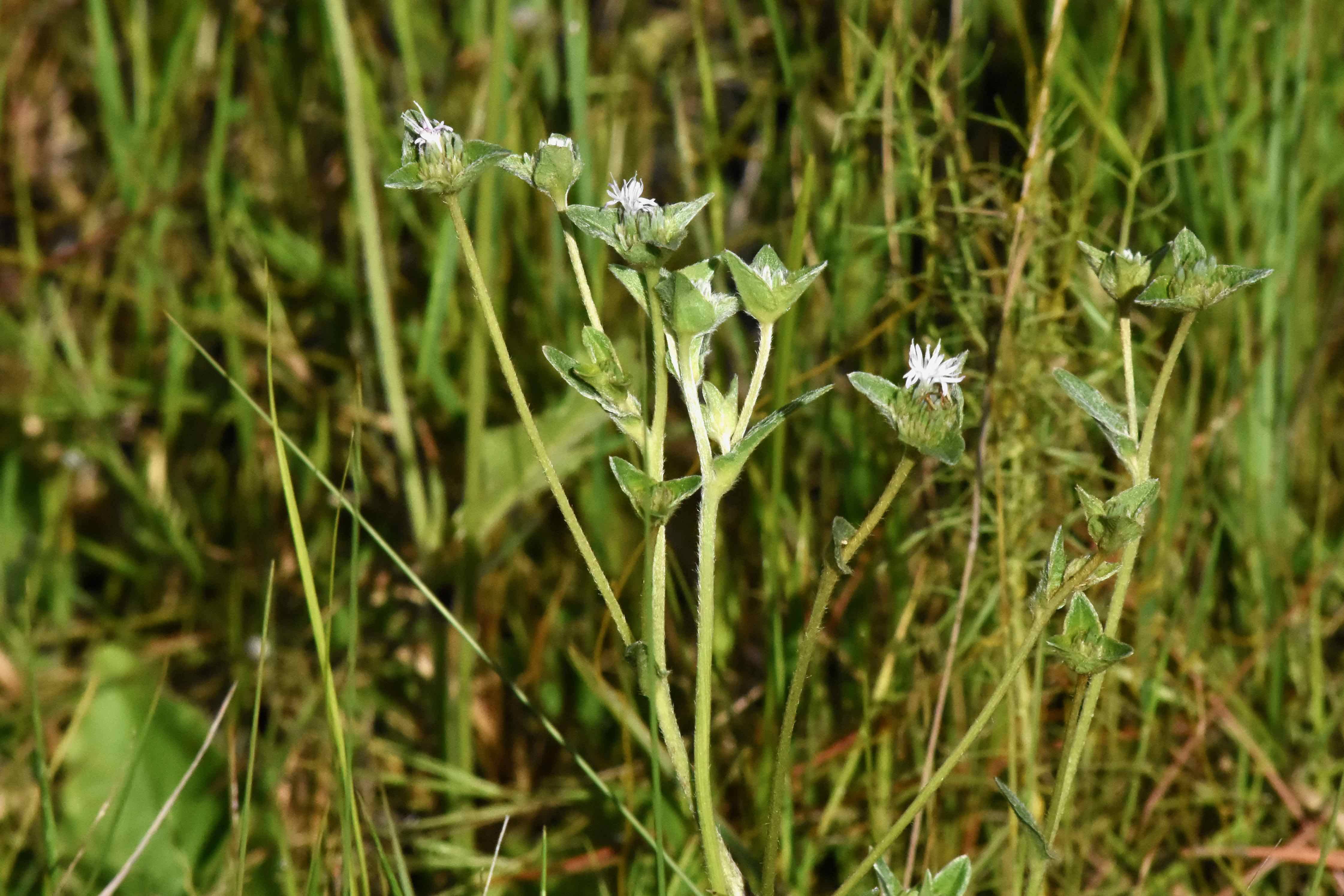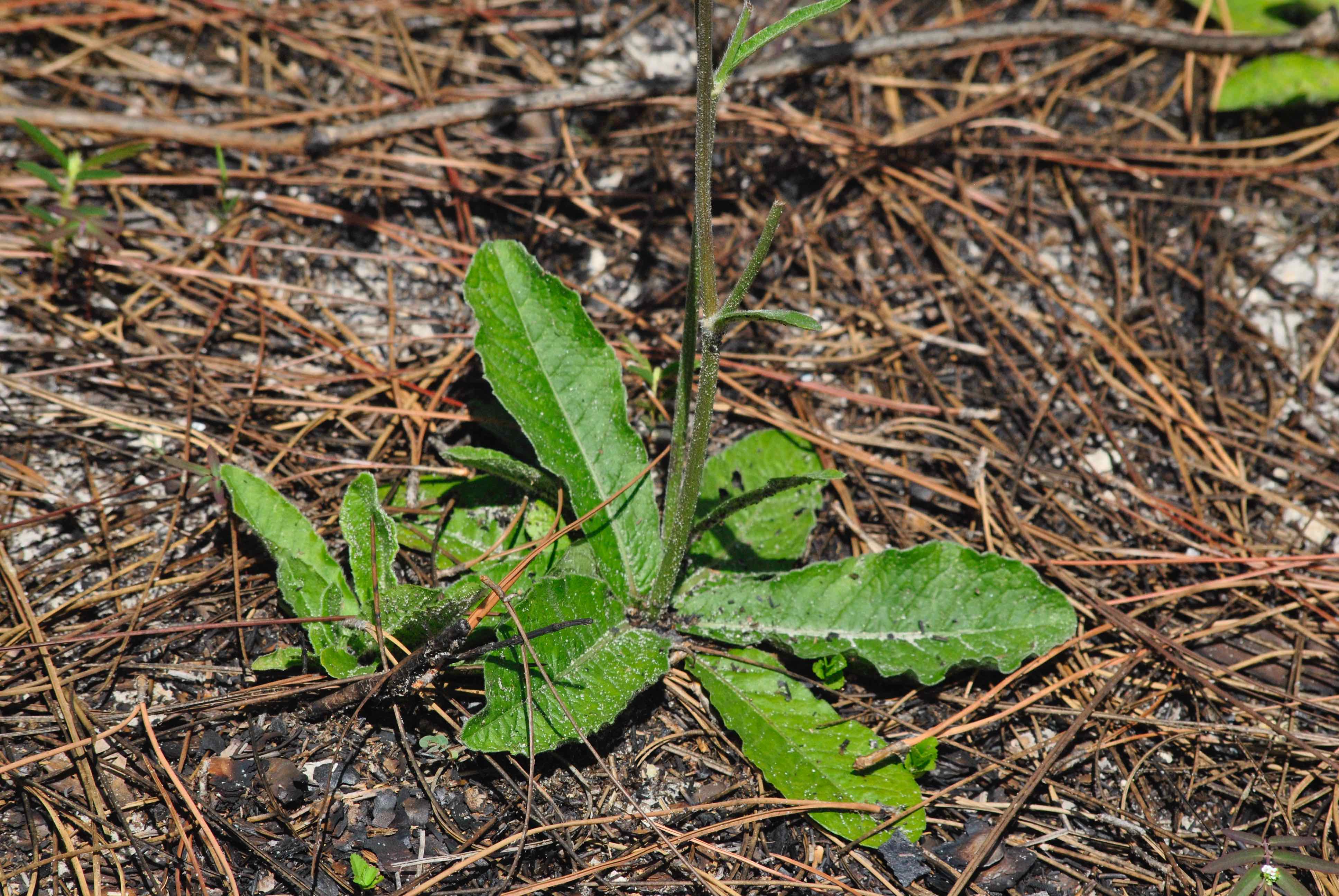
Florida elephant's foot, photographed at Royal Palm Beach Natural Area, Royal Palm Beach, Palm Beach County, in July 2016.
Florida elephant's foot, Elephantopus elatus, isn't nearly as big as it's impressive name might suggest. But it's footprint is elephant-sized relative to the rest of the plant.
As you might guess from the name, Florida elephant's foot is a Florida native, and it's found in nearly every one of the state's 67 counties. It's also found along the Atlantic and Gulf coastal plains from South Carolina to Louisiana.
It's tall and somewhat on the spindly side. We've seen some references that say Florida elephant's foot can reach a height of four feet, but what we've seen is probably 30 inches or less. In any regard, the stems are leaf-less, multi-branched, with a flower that can be blue, lavender or white. They bloom in the summer.
Those green, triangular, leaf-like structures where the flowers emerge are bracts.
At the base of the plant is a cluster, or rosette, of large leaves — the elephant's foot. The leaves rate the name — they can be as long as 10 inches.
The large basal leaves and long leafless stems are pretty much characteristic of the Elephantopus genus, members of which are found over much of the globe. Four members of the genus are found in Florida, but our guy here is the only one found in South Florida. One, which closely resembles Florida elephant's foot, is known as devil's grandmother for some strange reason. Some members are said to have medicinal properties, and are used in traditional medicine to treat various conditions.
As far as we can tell, Florida elephant's foot has not been used as a folk remedy, but that doesn't mean it hasn't been seen as having medicinal potential. A study done 40-plus years ago at the University of Wisconsin found that the plant has two substances that inhibit the growth of tumors — elephantin and elephantopin. Both are cytotoxic — they kill living cells — and could have some usefulness in treating lymphocytic leukemias. Both substances also made a list of molecules with silly sounding names (along with snog, porn and folk acid).
Habitat for Florida elephant's foot includes pinelands and open woods. It likes full or partial sun and moist, sandy soils. It is drought tolerant. The flower is somewhat attractive to the eye but more so to the "palates" of pollinators like bees and butterfilies. It is a perennial. It is used in landscaping and is sold by a few commercial nurseries in South Florida. it also grows readily from seed. It can be used as a border or accent plant, wildflower gardens, in restorations and natural landscapes. One quick note: according to the United States Department Agriculture, Palm Beach is one of the few Florida counties where Florida elephant's foot doesn't grow. But that's exactly where we found it. (Plant distribution maps are based on "vouchered," or scientifically verified specimens collected from various places. Plants don't read maps, so exclusions like elephant's foot from Palm Beach County should taken with a pinch of salt, so to speak. It might be that no one bothered to collect and submit a vouchered specimen or required habitat doesn't exist in a given county.)
Florida elephant's foot is a member of Asteraceae, the sunflower and daisy family. Other names: tall elephant's foot and common elephant's foot.
Click on photo for larger image
Links for Florida Elephant's Foot



